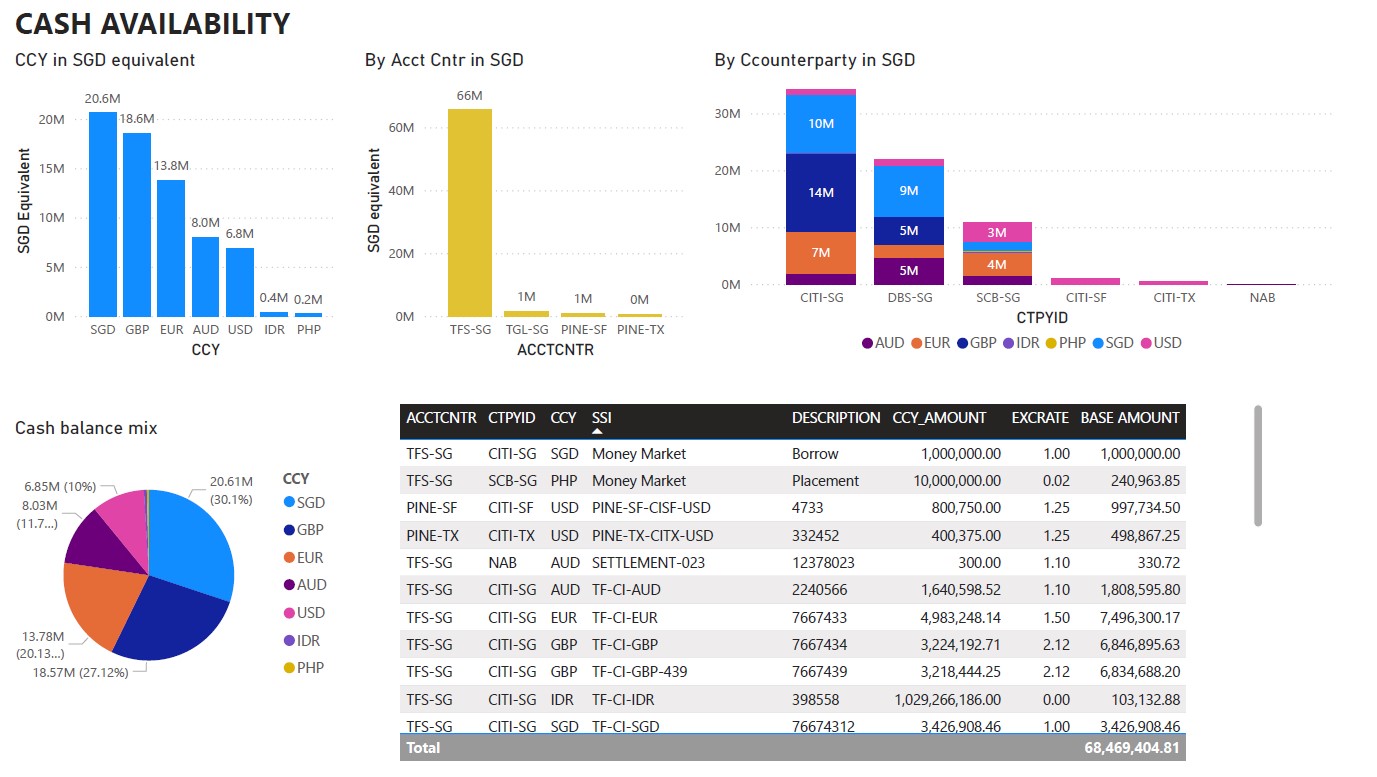This article provides an overview of the integration between banks and the CS Lucas Treasury Management System, highlighting the benefits, methods, and costs of integration.
BENEFITS
Integrating CS Lucas with your bank offers several benefits, including:
Accurate and up-to-date information for planning: With integration, bank balances and electronic statements are automatically retrieved and populated in real-time, enabling faster and more informed decision-making.
Streamlined payment processing: Integration enables payment instructions to be automatically pushed to the bank for settlement, reducing manual intervention and delays.
Reduced errors: Integration eliminates the risk of user errors when manually entering data between the e-banking platform and CS Lucas, reducing the possibility of errors in payment execution.
Enhanced fraud prevention: The use of automated systems for transferring files reduces the risk of tampering, improving security.
Increased efficiency: Manual retrieval and preparation of banking files can be time-consuming and tedious. Additionally, staff turnover requires ongoing training, which can be costly, and layering checks and balances to reduce payment errors can also be time-consuming. Integration streamlines these processes, reducing the risk of errors and improving efficiency.
INFORMATION EXCHANGE
During the integration process, information is exchanged between the bank and CS Lucas in two directions:
Bank to CS Lucas
The bank sends electronic bank statements and bank balances to CS Lucas. This information is typically delivered once a day, either at the end of the business day or at the start of the next. The bank statements and balances provide up-to-date information on the account balances and transactions, which are essential for cash planning and fund tracking. The bank statements are also used for bank reconciliation and can be automatically imported into CS Lucas or accounting system if the bank provides them in a compatible format. The manual way of getting this information from the bank is to log in to the e-banking portal and download the statements or check the latest available balance, usually provided in excel or CSV format.
CS Lucas to Bank
The CS Lucas sends payment instructions to the bank, which include the payee’s bank details, currency, amount, and value dates. By sending this information to the bank, CS Lucas initiates payment transactions. The manual way of sending payment information to the bank is through the e-banking platform, where the data needs to be created individually. Some banking platforms allow uploading payment information using spreadsheets to handle large volumes of line items.
METHOD OF EXCHANGING INFORMATION
There are two ways for the bank and CS Lucas to exchange information.
1. File exchange
File exchange involves a sending system providing information in a pre-defined format and placing it in a staging location for the receiving system to read and populate as required. While file formats are typically based on industry standards such as SWIFT MT or ISO20022, most companies create their variations with unique fields and data, creating a “dialect.” The sending and receiving systems must consider these variations to ensure a successful exchange.
You may subscribe to SWIFT Alliance Lite II or an approved SWIFT bureau to “push” and “pull” the integration files. In such cases, the files will be located in the “Autoclient” and need to be sent to a staging SFTP that our system can access.
For security purposes, files are encrypted with keys to prevent unauthorized access and tampering, and transfer over the network is also encrypted to prevent snooping. Access to the staging location, typically a server, is strictly limited.
Timing is critical for file exchange to work correctly. The receiving system must set a specific time to read the sending location, and the sending system must ensure the file is in place before that time. Near-real-time exchange can be achieved if the receiving system polls the staging location periodically, which may range from every few seconds to several times a day, depending on the use case.
Preparation and testing of a file exchange integration system can be done asynchronously by the sender and receiver. This means that both parties can prepare their systems to send or receive test and sample files, and once ready, the file transport can be tested for the end-to-end processing between the systems.
API-based
API involves a secure connection between two systems for data transfer, where the calling and handshake process between the systems is agreed upon for secure communication and exchange format.
API data exchange happens in real-time, but if the sending or receiving system processes data in batches, real-time data exchange only occurs at set intervals when the batches are processed, particularly in the banking industry.
Testing API-based integration systems must be a collaborative effort between the sender and receiver. Any issues arising during the exchange must be resolved and troubleshot in real time.
APPROACH
To assist our customers in evaluating integration with their banks, we suggest the following steps:
Determine the number of banks and accounts involved. Typically, only primary accounts require integration due to the higher volume of transactions and fluctuating balances.
· Contact the respective banks to understand the integration options available to customers and specifically to them.
Estimate the bank’s fees based on projected transaction volume and value.
Consult with CS Lucas regarding the integration method provided by the bank. By formally instructing the bank and CS Lucas to collaborate on this matter, we can act on your behalf and work with the bank to complete the integration process.
Discuss any integration costs associated with CS Lucas system.
Assume the role of a project sponsor for the integration project. CS Lucas and the bank will collaborate to ensure a successful integration.
COST OF INTEGRATION
There are several cost to consider
· The bank typically determines the method of integration available to their customer. We have also found situation in some banks where they provide alternative methods but and these are not universally available to all their customers. Therefore, it is recommended that customers speak with their bank to determine the integration options available to them.
Banks typically charge fees for providing integration services. These fees may include a one-time setup fee per account and ongoing fees based on the number of accounts and transaction volume. The prices and practices may vary depending on the bank. A corporation’s total integration cost will depend on its relationship and negotiation with its bank.
· If you intend to use the SWIFT Alliance Lite II platform or to rely on a SWIFT service bureau, you will have to consider the set up and on-running cost of this which is not insignificant.
· There is no cost of integration to the CS Lucas system when the following conditions are satisfied *:
a) the format for integration of the file is well formed based on standard format e.g. ISO20022, SWIFT MT, BAI and Bacs.
b) the exchange of file is “staged” at a SFTP server. We can offer to host this or it may be provided by the customer or their bank.
c) encryption and decryption of these files are based on Open PGP standards.
* Please contact your CS Lucas account manager or your banks to determine whether these conditions are met in your specific set up. If these conditions are not met, we can provide an estimate of the effort and cost involve. We are happy to meet with your banks and help if necessary. We can also advise on the most cost effective approach after weighing the different cost involved (if any) against your business needs.



